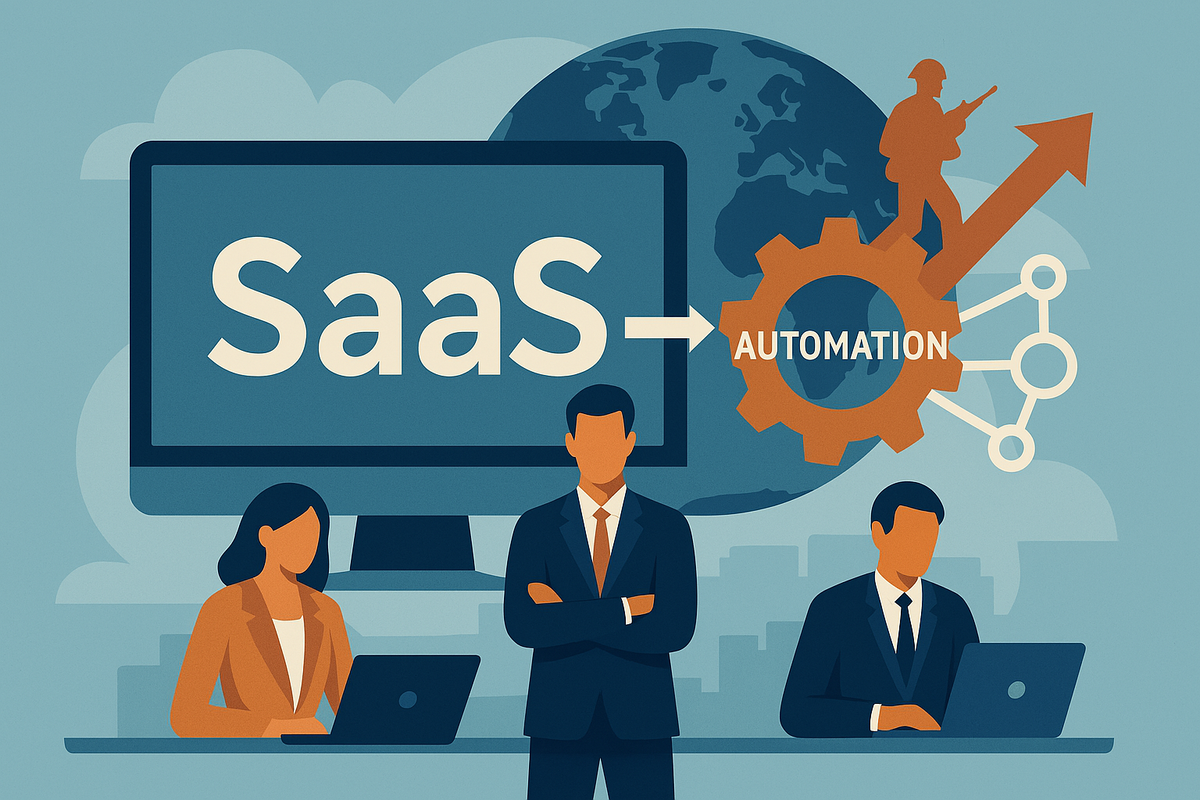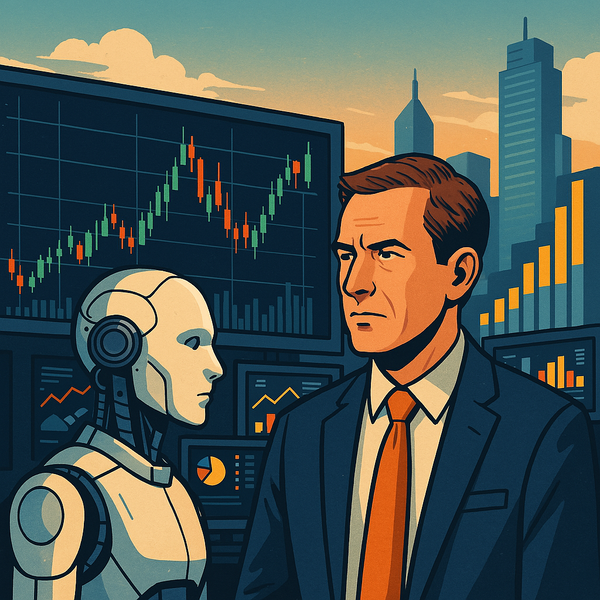Master Business Agility: Unleashing the Power of SaaS & Automation

Embracing SaaS and Business Automation in an Ever-Changing World
In an era where the world is constantly evolving and unpredictable events, such as Israel's recent military operation in the Gaza Strip, are reshaping the global landscape, businesses need to stay adept and agile. The need for efficient, scalable, and adaptable solutions has never been more critical. This is where Software as a Service (SaaS) and business automation come into play.
Navigating Through Unpredictability with SaaS and Automation
Whether it's geopolitical tensions, global pandemics, or economic shifts, businesses are constantly faced with unexpected challenges. Embracing the power of SaaS and business automation can help organizations navigate through these uncertainties, ensuring efficiency and resilience in the face of adversity.
Case Study 1: Salesforce's Journey Towards Business Automation
Introduction
Salesforce, a leading SaaS (Software as a Service) company, has utilized business automation to achieve its global stature. The company's journey towards automation offers valuable insights into how businesses can integrate SaaS and automation to streamline operations and increase productivity.
The Challenge
In the early 2000s, Salesforce was battling with manual processes that led to inefficiencies and errors. This affected customer service, lead management, sales operations, and overall productivity.
The Solution
Salesforce adopted SaaS and business automation to streamline its operations. They implemented automated CRM solutions, which drastically improved their customer service and lead management processes.
Results and Impact
Through automation, Salesforce enhanced its customer service, increased sales, reduced errors, and improved overall productivity. Today, Salesforce is a leading SaaS provider and a global leader in CRM solutions.
Case Study 2: HubSpot's Transformation with SaaS and Business Automation
Introduction
HubSpot, a renowned marketing, sales, and service software provider, offers a prime example of SaaS and business automation's transformative power. Their journey illustrates how these technologies can revolutionize business operations.
The Challenge
HubSpot initially struggled with uncoordinated marketing efforts and inefficient customer service. They needed a solution that could streamline their operations and improve their marketing strategies.
The Solution
HubSpot turned to SaaS and business automation. They developed an all-in-one inbound marketing platform that automated various marketing tasks, from email marketing to lead generation and analytics.
Results and Impact
The automation solution not only streamlined HubSpot's marketing operations but also offered their clients an efficient and effective marketing tool. Today, HubSpot is a leading provider of marketing automation solutions, serving over 100,000 customers in more than 120 countries.
Case Study 3: Slack's Success with SaaS and Business Automation
Introduction
Slack, a leading collaboration hub, provides a compelling story about the integration of SaaS and business automation. Their journey offers important lessons for businesses looking to enhance collaboration and productivity.
The Challenge
Slack was facing the challenge of managing communication across multiple teams and platforms. They needed a solution that could streamline communication and enhance collaboration among teams.
The Solution
Slack adopted a SaaS model and implemented business automation to create a collaboration hub. The platform automated various communication tasks and seamlessly integrated with other tools, making it a one-stop solution for team collaboration.
Results and Impact
Slack's automated collaboration hub revolutionized team communication and improved productivity. Today, Slack is a leading collaboration tool used by millions of people worldwide and stands as a testament to the power of SaaS and business automation.
Introduction
In the modern business environment, the significance of Software as a Service (SaaS) and business automation is rapidly increasing. As companies strive to streamline their operations and boost efficiency, these two concepts have taken center stage. This article will explore the latest trends and expert opinions in the realm of SaaS and business automation.
SaaS: The Future of Business Operations
Democratizing Technology
One of the most notable trends in SaaS is its role in democratizing technology. This is particularly relevant in today's fast-paced business environment where agility and speed are critical. With SaaS, businesses of all sizes can access sophisticated technology without the need for extensive IT infrastructure or expertise.
Integration and Customization
Integration and customization capabilities are now becoming a standard feature of SaaS platforms. This trend reflects the increasing complexity of business operations and the need for flexible, tailored solutions.
Business Automation: The Key to Efficiency
Artificial Intelligence and Machine Learning
Artificial Intelligence (AI) and Machine Learning (ML) are at the forefront of business automation. These technologies are increasingly being used to automate routine tasks, improve decision-making, and enhance customer service.
Robotic Process Automation
Robotic Process Automation (RPA) is another key trend in business automation. With RPA, businesses can automate repetitive tasks, freeing up valuable time for employees to focus on more strategic initiatives.
Process Mining
One of the latest developments in business automation is process mining. This technology uses AI to analyze business processes and identify opportunities for automation.
SaaS, Business Automation, and Geopolitical Factors
Business operations are often influenced by geopolitical factors. For instance, the recent military operation by Israel in the Gaza Strip may have implications for companies operating in the region. Defense Minister Israel Katz stated that the operation was "expanding to seize 'large areas'" of the Palestinian territory. This situation could lead to disruptions in business operations in the area, potentially affecting companies that rely on SaaS and business automation technologies. Businesses need to keep abreast of such geopolitical developments and adjust their strategies accordingly. This highlights the need for flexible, adaptable SaaS and business automation solutions that can accommodate changing circumstances.
Conclusion
To stay competitive in today’s dynamic business environment, companies need to leverage the power of SaaS and business automation. By staying informed about the latest trends in these areas and understanding how geopolitical factors can impact business operations, companies can position themselves for success in the digital age.
FAQ: SaaS and Business Automation
1. What is SaaS in Business Automation?
Software as a Service (SaaS) in business automation is a type of software distribution model where a third-party provider hosts applications and makes them available to customers over the Internet. It is an on-demand software that helps businesses automate their processes, saving them time and resources. For more information, check out this Salesforce link.
2. What are the benefits of SaaS in Business Automation?
Some benefits of using SaaS in Business Automation include cost-effectiveness, scalability, easy integration, automatic updates, global accessibility, and high adoption rates due to the user-friendly interface of most SaaS applications. Check out IBM's detailed explanation on the benefits of SaaS.
3. How does SaaS help in Business Automation?
SaaS helps in business automation by providing software applications that streamline and automate routine tasks in various business processes. It eliminates manual processes, reduces errors, improves efficiency and allows businesses to focus on core competencies. For an in-depth explanation, visit Zoho's blog.
4. What are some examples of SaaS in Business Automation?
Examples of SaaS used in Business Automation include customer relationship management (CRM) software, human resources management (HRM) software, enterprise resource planning (ERP) software, and marketing automation software. For more examples, visit HubSpot.
5. How does SaaS in Business Automation influence customer service?
SaaS in business automation can greatly enhance customer service. It can automate customer service processes, provide real-time assistance, and facilitate better communication. Check out Zendesk's article on automating customer service.
6. Is SaaS in Business Automation secure?
While no system is completely immune to security threats, SaaS providers typically invest heavily in security measures, including data encryption and regular system updates, to protect customer data. For more insights, check out this Microsoft article.
7. What are the potential drawbacks of SaaS in Business Automation?
Potential drawbacks may include dependency on the vendor, limited customization, and potential data security concerns. For a more detailed discussion, read this article on CIO.
8. How can a business start implementing SaaS in Business Automation?
Businesses can start implementing SaaS in Business Automation by first identifying the processes they want to automate. They can then research and select a SaaS provider that best meets their needs. For a step-by-step guide, visit Ademero.
Conclusion
In the era of digital transformation, SaaS and Business Automation are powerful tools that can significantly enhance business processes. They offer numerous advantages such as cost-effectiveness, scalability, easy integration, and improved customer service. However, businesses must also be aware of potential drawbacks and take necessary precautions. As the need for business efficiency continues to grow, the use of SaaS in Business Automation is likely to become increasingly prevalent. As for the situation in Israel and Gaza Strip, the ongoing military operation and territorial expansion may have significant geopolitical implications. However, it is beyond the scope of this FAQ on SaaS and business automation. For accurate updates and comprehensive coverage on this issue, please follow trusted news outlets.




